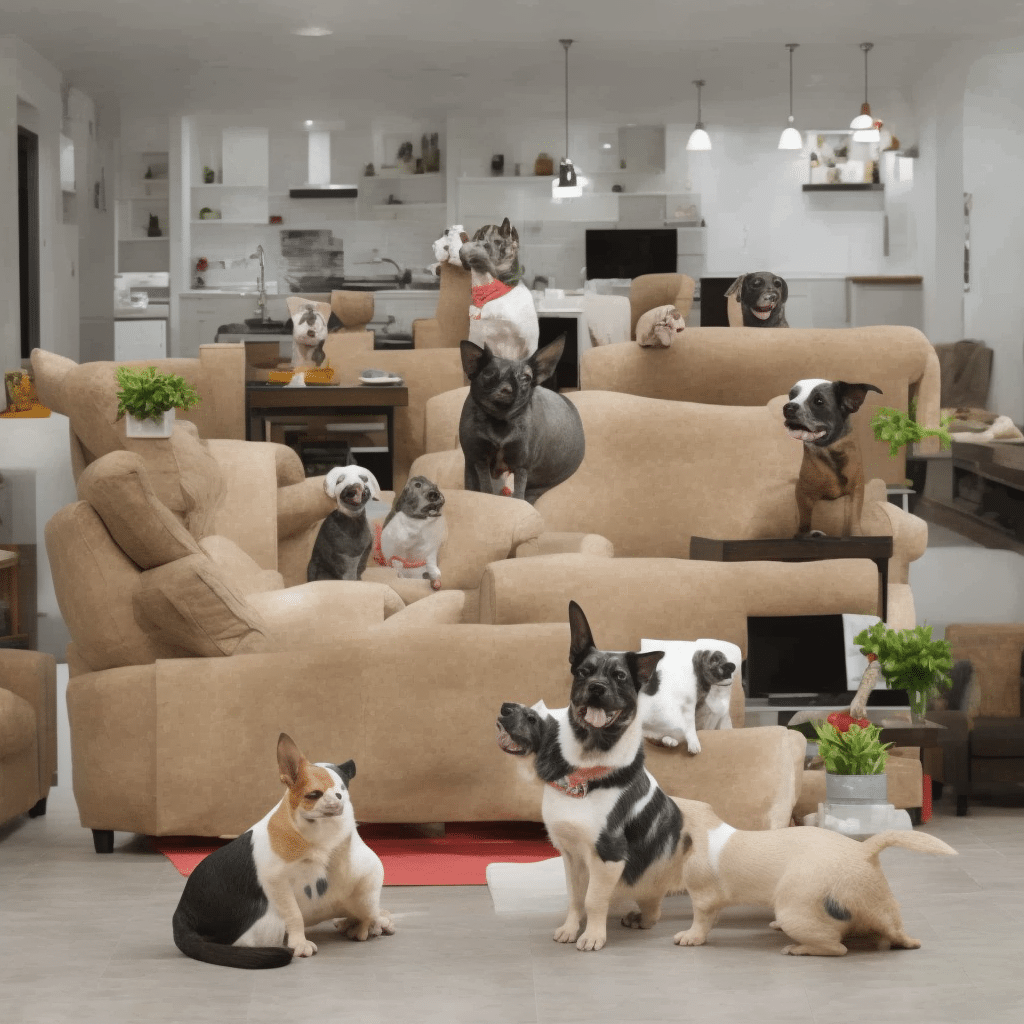Moving to a new place can be a daunting experience for anyone, and it’s no different for our furry friends. Whether you’ve just adopted a new puppy or your aging cat needs more room to roam, introducing your pet to a new and larger living space can be a challenge. But fret not, with the right strategies and a lot of patience, you can help your pet adjust smoothly. Here are some effective ways to make that happen.
Understanding Your Pet’s Behavior
Before you begin the introduction, it’s crucial to understand your pet’s behavior. By doing so, you’ll have a better grasp of their comfort zones and how they might react to new experiences.
En parallèle : How to Choose the Right Type of Pet Door for Your Home and Pet?
Dogs, for instance, are generally curious creatures. They enjoy exploring new territories and marking them as their own. However, this doesn’t mean they’ll immediately adjust to a larger space. They might feel intimidated or anxious initially, which could manifest in unusual behavior like excessive barking or chewing.
Cats, on the other hand, are typically territorial and prefer familiar surroundings. A sudden change in environment can cause them stress and lead to behaviors like hiding, over-grooming, or even refusing to eat.
Dans le meme genre : How to Choose Pet-Friendly Furniture That Combines Comfort and Durability?
Remember, patience is key during this process. Your pet may not immediately warm up to the new environment. Allow them to take their time to explore and get used to their new home.
Gradual Introduction is Key
When introducing your pet to a new space, it’s best to take it slow.
Start small. Keep your pet in one room initially. This will allow them to feel secure and not overwhelmed by all the new sights and smells. Once they seem comfortable, gradually introduce them to the rest of the house.
Try to maintain their regular routines as much as possible. Regular feeding, playtime, and walk schedules will help them adjust faster as they provide a sense of normalcy.
In the case of dogs, consider taking them for a walk around the new neighborhood. This will help them become familiar with the surroundings and can alleviate territorial anxiety.
For cats, create "safe zones" around the house. These could be high shelves or secluded corners where they can retreat when they feel overwhelmed. Cats are climbers and love to perch on high places. Providing them with such spaces can help them feel more secure.
Creating a Positive Association
Creating a positive association with the new space is an effective way to help your pet adjust.
One effective way to do this is by using your pet’s favorite toys, blankets, or beds to make them feel more comfortable. The familiar smells will provide comfort and make the space feel more like home.
For dogs, consider using treats or praise to reward them when they explore the new space. This will motivate them to continue exploring and associate the new area with positive experiences.
For cats, try placing their food and water bowls, and their litter box in the same area where they were in your previous home. This consistency will help them adjust faster and create a positive association with the new space.
Allow Your Pet to Explore at Their Own Pace
Every pet is unique and will adjust to new environments at their own pace.
Your dog may take a few days to feel comfortable in the new space, while your cat may take weeks. It’s important not to rush them and respect their individual timelines.
Ensure they have plenty of opportunities to explore their new surroundings. You can do this by leaving doors open (where safe to do so) and encouraging exploration. However, always supervise your pets during these early explorations to ensure they don’t get into any trouble.
Maintain Open Communication with Your Vet
Throughout this transition, it’s essential to maintain open communication with your vet. They can provide you with personalized advice based on your pet’s breed, age, and personality. If your pet shows persistent signs of stress or anxiety, don’t hesitate to reach out to your vet. They can offer solutions or even refer you to a pet behaviorist if needed.
In conclusion, while introducing a pet to a new and larger living space may require extra time and patience on your part, the reward of seeing your beloved pet adjust and thrive in their new environment will make it all worthwhile. So, take it slow, be patient, and before you know it, your furry friend will be ruling their new roost with confidence!
Providing Comfort in the New Environment
When it comes to settling your pet into their new environment, comfort is key. The unfamiliarity of a new space may be unsettling for your pet, but there are certain measures you can take to minimize stress and anxiety.
For both your dog and your cat, it’s crucial to provide familiar items that will help them feel more at home in the new space. Their favorite toys, blankets, or beds can serve as comforting reminders of their previous environment. For your cat, who may be particularly sensitive to changes in their territory, you might consider bringing in their old litter box. The familiar scent can help reassure them and ease their transition.
Another important aspect to consider is your pet’s body language. This can give you insight into how they are feeling about the new environment. Watch for signs of stress or anxiety, such as excessive grooming in cats or pacing in dogs. If you notice these behaviors, it means your pet may not be comfortable yet, and there is a need for further adjustments or reassurances.
In the same vein, communication with your pet is necessary. Reassure your pet with soothing words and gestures, reminding them that they are safe and loved. Keep your tone calm and reassuring, as pets can pick up on their owner’s mood and emotions.
Adapting to the Larger Space
While upgrading to a larger living space can provide your pet with more room to roam, it can also present new challenges for them. The key to helping your pet adjust is to understand their needs and cater to them accordingly.
For your dogs, they may be excited by the larger space but also intimidated by the unknown. Allow your dog to explore the new home at their own pace, supervising their exploration to prevent any possible mishaps. It could also be beneficial to introduce your dog to the larger space gradually, starting with one room and progressively allowing them into more areas of the house.
When it comes to your cats, remember that they are naturally inclined to explore higher ground. In a larger space, ensure there are high places, such as shelves or cat trees, where they can perch and observe their surroundings. This will not only provide them with a sense of security but also serve as a fun activity for them.
Remember, each pet is an individual, and what works for a resident dog or adult dog may not work for a new puppy or an aging cat. Always monitor your pets and adjust accordingly to their responses and needs.
Conclusion
Introducing your pet to a new and larger living space can be a challenging task, but with patience, understanding, and proper strategies, it can be a seamless transition. Remember to observe your pet’s behavior, maintain their routines, create a positive association with the new space, allow them to explore at their own pace, and keep open communication with your vet. Ultimately, the goal is to make your beloved family member feel safe and comfortable in their new environment. As you watch your pet grow accustomed to their new surroundings and become the king or queen of their larger castle, you’ll find that the effort you’ve put in is indeed worthwhile.










